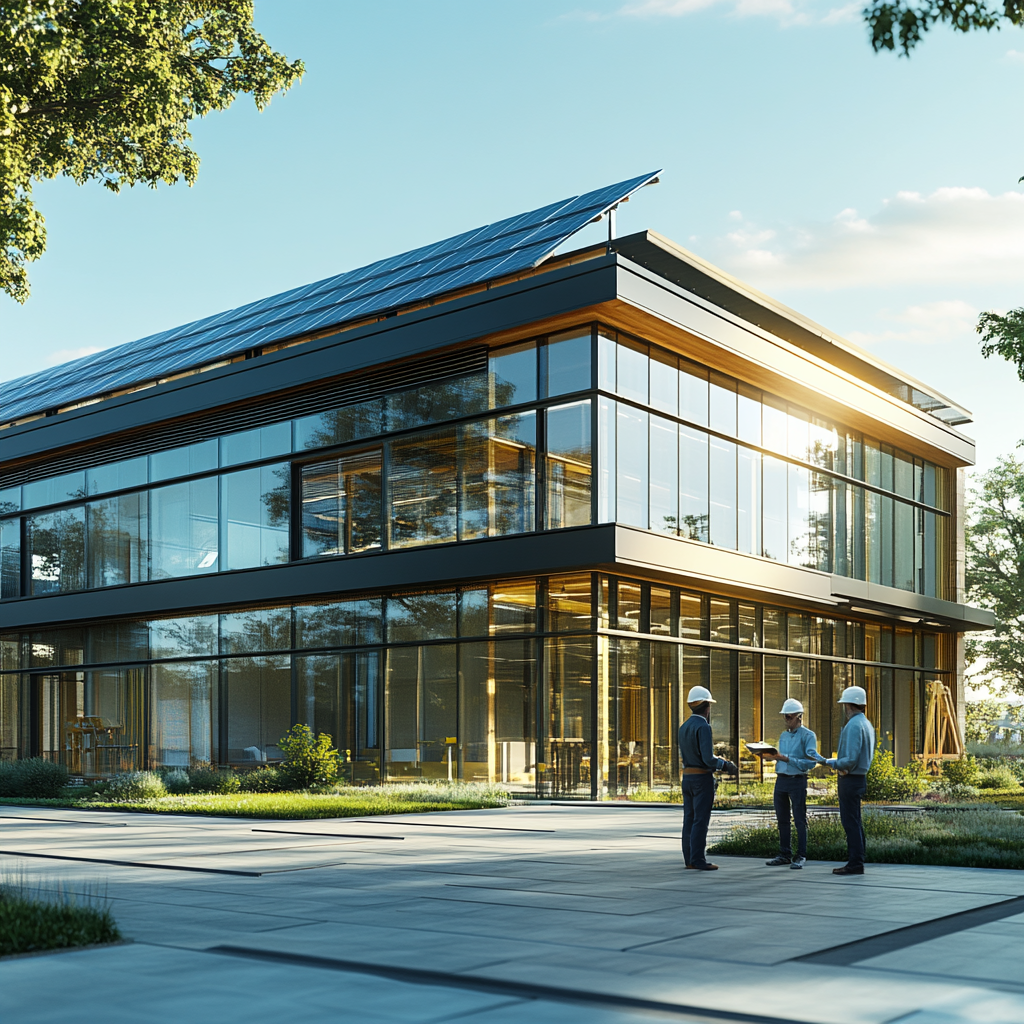The construction industry stands at a pivotal moment where choosing the right solar energy contractor services can determine whether a project becomes a beacon of sustainability or merely another energy-consuming structure. Today’s leading certified solar energy contractor teams function as modern-day architects of energy independence, transforming buildings from passive consumers into active power generators that contribute to both environmental stewardship and long-term financial viability.
Like master conductors orchestrating a symphony, these specialists coordinate complex installations that harmonize architectural aesthetics with cutting-edge renewable technology. The role extends far beyond simple panel placement, encompassing comprehensive energy system design, regulatory navigation, and performance optimization that can span decades of building operation.
The Strategic Partnership Advantage
Think of exceptional solar contractors as the bridge between sustainability goals and practical implementation reality. Partnering with certified solar panel installation specialists ensures seamless integration and long-term performance. The most successful construction projects integrate solar considerations from the earliest design phases, rather than treating renewable energy as an afterthought bolted onto completed structures.
This integrated approach yields remarkable results. Projects that involve energy specialists during architectural planning typically achieve 15-25% better performance metrics compared to retrofitted installations. The difference lies in how these experts optimize roof orientation, structural load distribution, and electrical system integration to maximize energy production while maintaining design integrity.
Leading contractors bring invaluable expertise in navigating local regulations, utility interconnection requirements, and incentive programs that significantly impact project timelines and budgets. Their knowledge transforms regulatory roadblocks into streamlined approval processes, often reducing permitting timeframes from months to weeks.
Technology Integration and Future-Proofing
The solar industry evolves rapidly, with new technologies emerging that dramatically improve system performance and longevity. Expert contractors serve as technology translators, helping construction teams understand how innovations like microinverters, power optimizers, and battery storage systems enhance project value.
Modern installations increasingly incorporate smart monitoring systems providing real-time performance data, predictive maintenance alerts, and detailed energy production analytics. These systems transform solar installations from passive infrastructure into active building management tools that optimize energy consumption patterns.
Forward-thinking contractors design systems with expansion capabilities, recognizing that building energy needs may evolve. This ensures initial installations can accommodate future additions, electric vehicle charging infrastructure, or emerging technologies without requiring complete system overhauls.
Quality Assurance and Performance Optimization
The difference between mediocre and exceptional solar installations often comes down to attention to detail in system design and installation quality. Top-tier contractors employ rigorous quality control processes that begin with comprehensive site assessments and continue through post-installation performance monitoring.
Proper installation techniques dramatically impact system longevity and performance. Expert contractors understand how factors like mounting hardware selection, cable management, and grounding systems affect both immediate functionality and long-term reliability. Their expertise prevents common installation errors that can lead to premature equipment failure or safety hazards.
Performance optimization extends beyond installation to encompass ongoing maintenance programs ensuring systems continue operating at peak efficiency throughout their operational lifespan. These programs typically include regular cleaning protocols, electrical connection inspections, and performance monitoring identifying issues before they impact energy production.
Financial Engineering and Return Optimization
Sophisticated solar contractors function as financial strategists, helping construction teams navigate complex incentive structures, financing options, and ownership models that significantly impact project economics. Their expertise in tax credit optimization, utility rebate programs, and power purchase agreements can mean the difference between marginal and exceptional project returns.
Experienced contractors provide detailed financial modeling that accounts for energy escalation rates, equipment degradation curves, and maintenance costs over system lifespans. This analysis enables informed decision-making about system sizing, technology selection, and financing structures aligning with project goals and budget constraints.
Many contractors offer performance guarantees providing additional financial security for construction teams and building owners. These guarantees typically cover energy production levels and equipment performance, transferring risk from building owners to contractors with specialized expertise.
Coordination with Construction Teams
Successful solar integration requires seamless coordination with general contractors, structural engineers, and electrical teams throughout the construction process. The best energy contractors excel at communication and project management, ensuring that solar installations enhance rather than complicate overall construction schedules.
This coordination becomes critical in new construction where solar installations must synchronize with roofing work, electrical rough-in, and utility connections. Expert contractors provide installation timelines integrating smoothly with construction milestones.
The collaborative approach extends to design optimization, where solar contractors work with architects and engineers identifying opportunities for aesthetic integration and performance enhancement. This teamwork often results in installations enhancing architectural vision while maximizing energy production potential.
Innovation and Emerging Technologies
The solar industry continues to innovate rapidly, with new technologies emerging regularly. Leading contractors stay at the forefront, bringing cutting-edge solutions to construction projects that improve performance, reduce costs, or enhance aesthetic integration.
Building-integrated photovoltaics represent one exciting frontier where solar technology becomes indistinguishable from traditional building materials. Expert contractors understand how these technologies can be incorporated into facades, roofing systems, and windows creating integrated renewable energy solutions.
Energy storage integration also represents a rapidly evolving field where contractor expertise becomes invaluable. Battery systems require careful sizing, sophisticated control systems, and integration with solar production and electrical systems.
Long-Term Value Creation
The true measure of exceptional solar contractor partnerships lies in long-term value creation extending beyond initial installation completion. The best contractors establish ongoing relationships supporting system optimization, expansion planning, and technology upgrades throughout building lifecycles.
This long-term perspective influences every aspect of system design and installation, from component selection prioritizing longevity to installation techniques facilitating future maintenance and upgrades.
Performance monitoring and maintenance programs ensure systems continue delivering optimal value throughout operational lives. Regular assessments identify opportunities for performance improvements, technology upgrades, or system expansions enhancing building value and energy independence.
The solar revolution in construction represents more than technology adoption; it embodies a shift toward sustainable building practices benefiting the environment and economics. Expert energy contractors serve as essential partners bringing specialized knowledge, proven processes, and innovative solutions enabling construction teams to create buildings generating rather than consuming energy.
Success demands partnerships with contractors combining expertise, financial acumen, and collaborative approach delivering installations exceeding performance expectations.



























